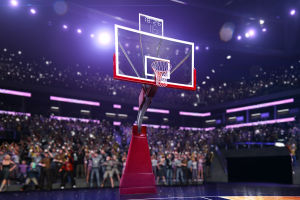When we step onto the tennis court, one of the most important skills we need to perfect is the serve. It's not just about hitting the ball—it's about setting the tone for the entire game.
A strong, consistent serve can give us a huge advantage, often determining the outcome of a match. It's the only part of the game where we have complete control, making it essential to develop both power and accuracy.
In this article, we'll explore how we can improve our tennis serving technique to boost our competitive edge.
The Basics of Tennis Serving
Before we dive into advanced techniques, it's essential to have a solid foundation. A successful serve requires three key elements: technique, power, and consistency. First, we need to focus on our stance and grip. The proper grip is critical in generating spin and control, and the right stance sets the foundation for the serve's trajectory. Once we've mastered the basics, we can work on increasing speed and precision.
The key components of a good serve include:
• The Toss: A consistent toss is critical for an effective serve. We need to release the ball slightly in front of us and at the right height for an optimal strike.
• The Follow-Through: A fluid follow-through ensures the power generated from our legs and core is transferred into the ball. A proper follow-through not only adds speed to the serve but also provides the necessary spin and control.
Increasing Serve Power
Power is an essential factor in any serve. The more force we put behind the ball, the harder it is for our opponent to return it. So, how do we increase serve power?
• Leg Drive: The key to generating power starts from the ground up. By using our legs to push up from the ground, we transfer energy through our core and into our arms. The more force we generate from our legs, the faster the ball will travel.
• Core Strength: A strong core is crucial for transferring the power from our legs to our arms. By engaging the muscles of our abdomen and lower back, we can significantly increase the velocity of our serve.
• Racket Speed: Increasing the speed at which we swing our racket also contributes to a more powerful serve. Practicing fast, controlled swings while maintaining proper form can help us achieve maximum racket speed.
Mastering Serve Placement and Angle
While power is important, it's equally essential to focus on the placement and angle of our serve. We could have the fastest serve on the court, but if we place it directly in our opponent's strike zone, we won't have an advantage. To truly dominate with our serve, we need to develop a keen sense of direction and precision.
• Targeting the Corners: Aiming for the corners, both wide and down the T, forces our opponent to move quickly. This creates openings for us to follow up with an attack.
• Body Serve: A well-executed body serve can jam our opponent's return, leaving them little space to hit an effective shot. This serve is especially useful when trying to break their rhythm.
• Spin Serve: Adding spin to our serve—whether top-spin or slice—can alter the ball's trajectory, making it more difficult for the opponent to return. Spin serves are particularly useful on slower surfaces like clay courts.
Building Consistency for Long Matches
In tennis, a strong serve is not just about power; it's about being able to hit your serve consistently throughout the match. During long rallies, our serve can be the difference between winning and losing a point. So, how do we improve consistency?
• Serve Routine: Developing a pre-serve routine can help us stay calm and focused. Whether it's bouncing the ball a few times or taking a deep breath, creating a ritual allows us to stay in control, especially under pressure.
• Practicing First and Second Serves: A strong second serve is just as important as the first. While the first serve is about power, the second serve is about reliability. By practicing both serves regularly, we can avoid double faults and ensure we stay in the game.
• Mental Focus: Consistency also depends on mental strength. Staying focused, especially in tight moments, can help us maintain a steady serve throughout the match.
Conclusion: The Power of a Well-Executed Serve
In tennis, the serve is one of the most crucial aspects of the game. By focusing on the fundamentals, improving our power, and mastering placement, we can turn our serve into a tool that will keep our opponents on their toes. But remember, a successful serve is not just about hitting the ball hard; it's about controlling the game's tempo and making the most of every point. So, next time we step onto the court, let's commit to perfecting our serve—because mastering this skill can be the key to dominating the game. What part of your serve do you feel needs improvement? Keep practicing, and watch your serve evolve!

